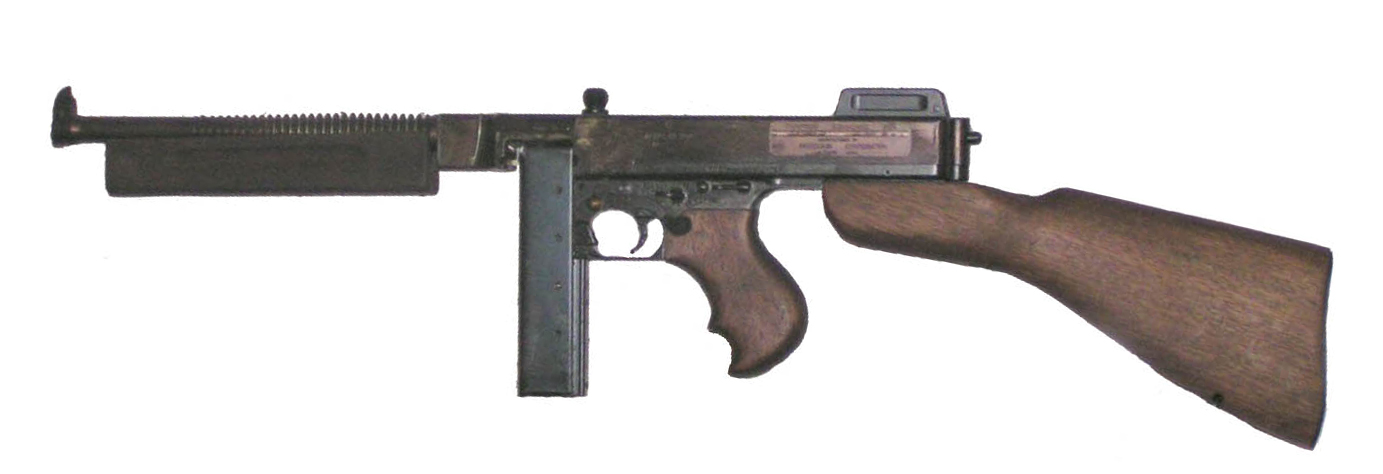
The Small Arms Of The US Army Tanker: Tankers Were Issued Gear, But Once In The Field, They May Have Used Other Than Issued Small Arms.
The US Army issued early Sherman tanks with a single Thompson M1928A1 .45 caliber submachine gun. The tank also had two boxes to hold a total to twelve hand grenades of various types. Two smoke and two thermite grenades were kept in a box on the left side turret wall, and there was another box under the gunner seat that held 2 smokes grenades, 4 M2 fragmentation grenades, and 2 M3 offensive grenades. The tank also had a pair of M1919A4 machine guns and the M2 HB that could be mounted on the pair of tripods issued with the tank. They had 600 rounds of .45 ACP and 4750 rounds of .30 caliber, and 300 rounds for the M2 HB. This was what the tank could officially carry, but crews often carried more .30 caliber rounds, and even main gun ammo on the floor of the tank, and they would also store small arms ammo on the outside of the tank
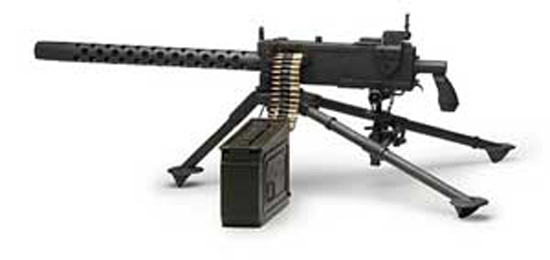
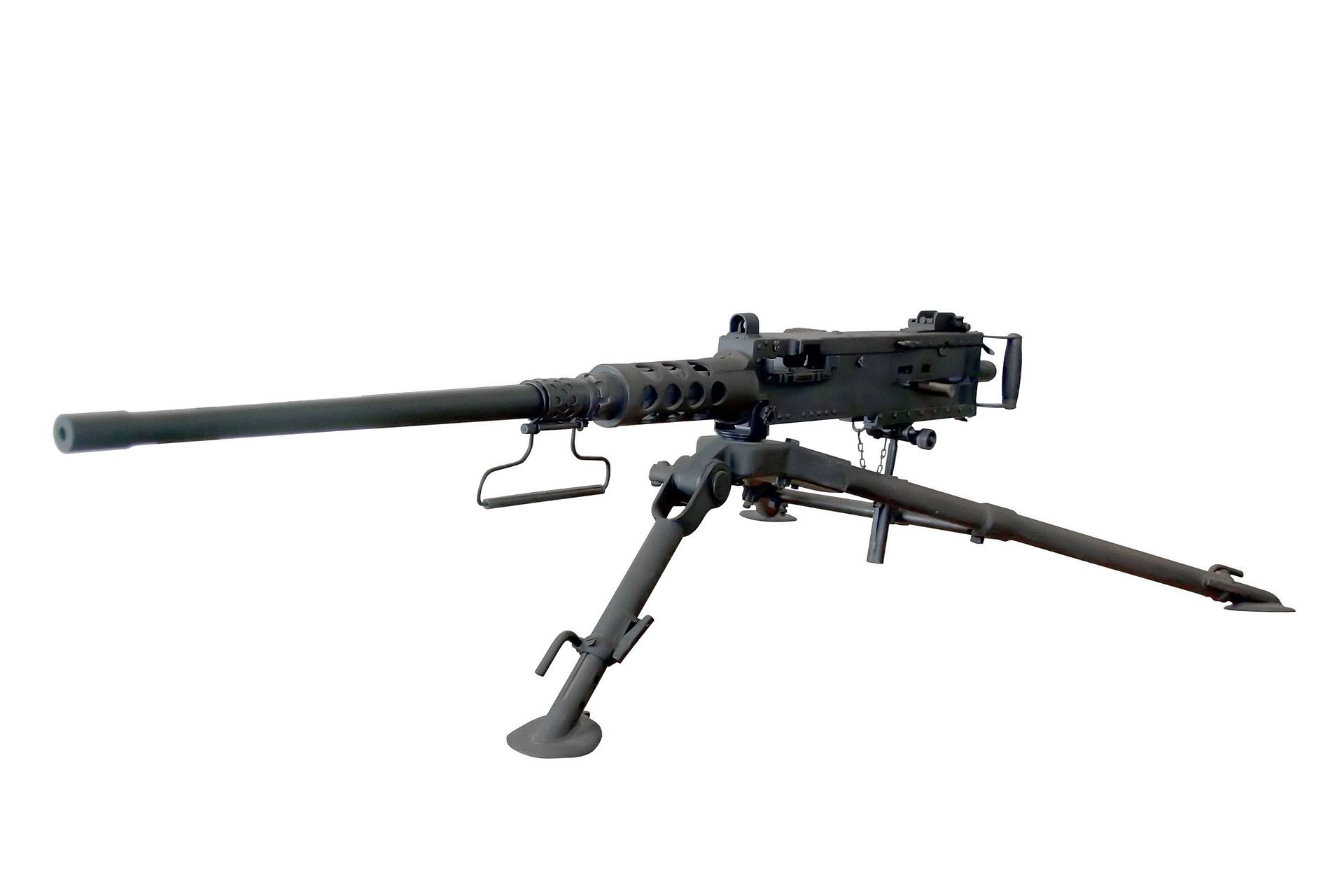
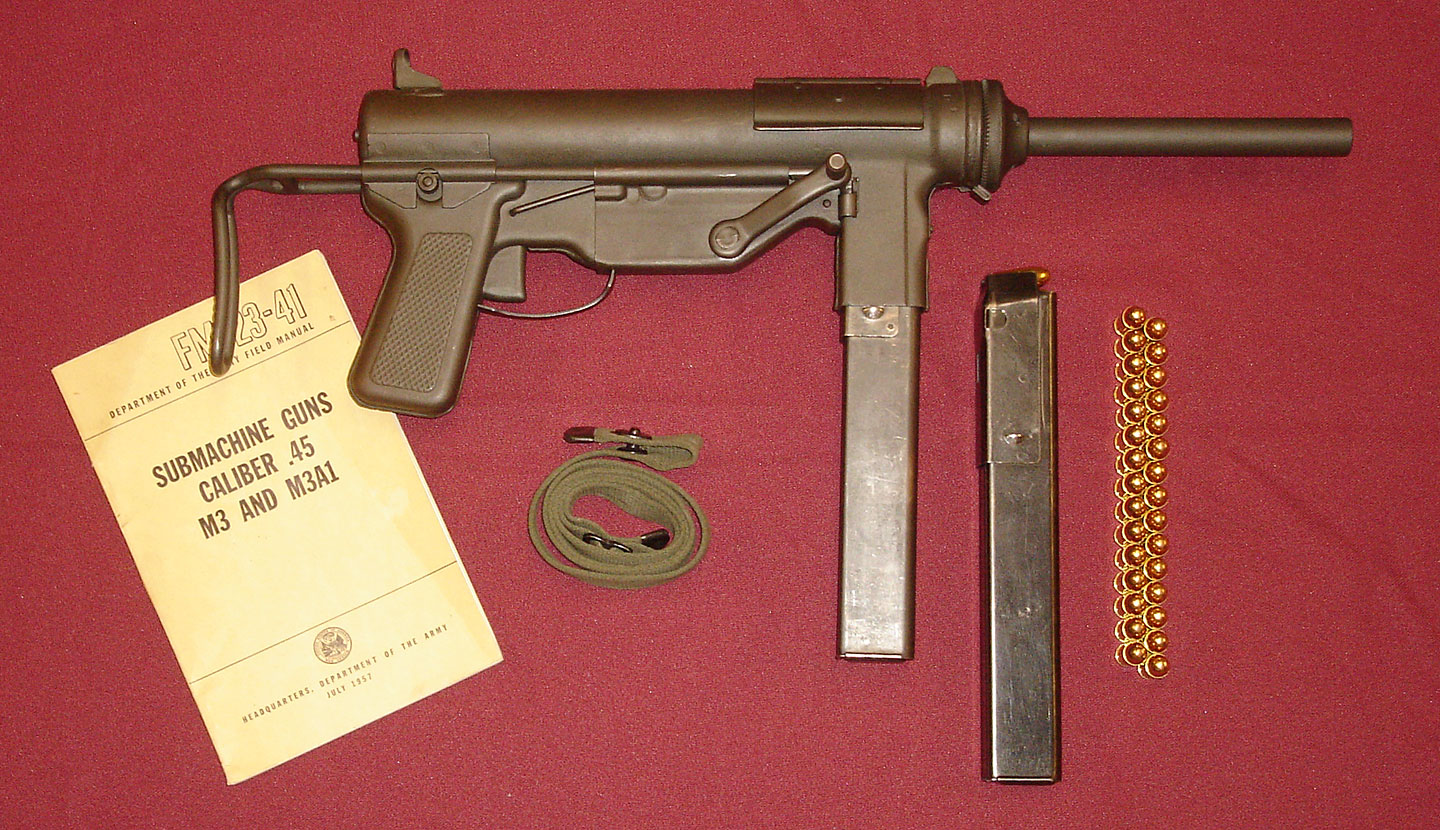
Later versions of the Sherman were issued with a slightly different setup. The single M1928A1 Thompson was replaced with 5, M3 submachine guns. The other major change was, all the machine guns were provided with more ammo, 600 .50, 6250 .30, and the same 600 rounds of .45 for the new SMGs. The tank was also issued with a small number of spare parts that commonly broke on all the weapons and specialized tools to service the tanks weapons.
In all cases, each member of the Sherman crew would have been issued a M1911A1 pistol as a side arm, but that was their personal weapon, and not part of the tanks gear.
Let’s talk about these weapons a little, first the Machineguns.
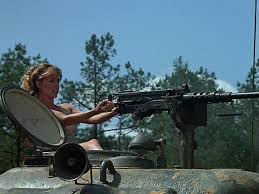
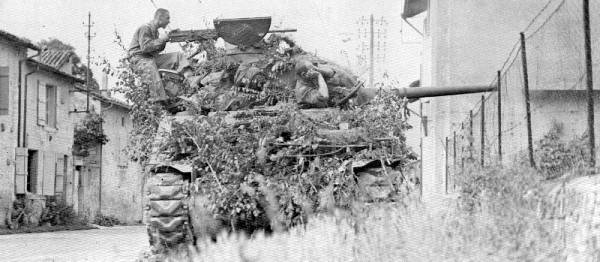
M2 HB .50 caliber machine gun: Who doesn’t know about this machine gun, developed before WWII, it was a legend by the end of the war and is still being used. It saw use everywhere the US Military fought. If it could mount a heavy Machine gun or guns, the Americans put one of these on it. The Sherman had one, The M16 halftrack had four, the P-47 Thunderbolt had eight! They used them on ships, jeeps, aircraft, with the infantry, and as AA guns. There is a reason this machine gun, designed by maybe the greatest firearms inventor of all time, John Browning, is still in use, its a great gun, firing a pretty good round. It’s so well liked, slightly improved version still serve with the US Military and to many other Nations around the world to list here.
The versions issued on the Sherman had a 450 to 550 RPM, and a quick change barrel that still required it to have its headspace adjusted, so not all that quick. Someone who knew what they were doing could keep the barrel from overheating by firing in short controlled bursts though, and on the Sherman, since the ammo supply was fairly small, you had to use it sparingly anyway. The machine gun would rarely leave the tank, were the lighter M1919s might be pulled and mounted on a tripod for some reason, if the crew had to fight on foot, or to setup around a perimeter at night maybe. In the Pacific, they would build a bunker under the tank and have a sandbagged enclosure at the front they could crawl into with the .30 mounted on a tripod.
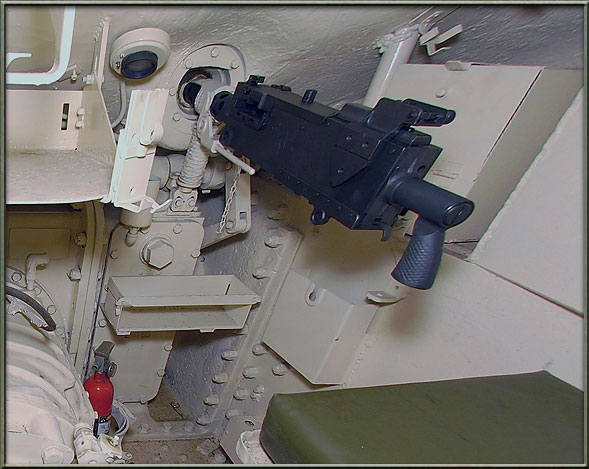
M1919A4 .30 caliber machine gun: The Sherman crew was provided with two, sometimes three of these guns. They like their bigger, little brother, the M2, were designed by John Browning. For The US Military in WWII and Korea, .30 caliber meant the 30-06 cartridge. This was a pretty decent round as .30 caliber rounds go, and would serve as the Army rifle and light/medium machine gun chambering until the adoption of the 7.62 NATO round. This gun spat rounds at between 450 and 550 round per minute and it was a reliable and well liked gun. If it had a flaw, it was it was not easy to swap barrels on, for the same reasons as the M2, and it was a tad heavy for a light/medium machine gun, these are minor flaws for a vehicle mounted MG, though, in longer fights, the co-ax M1919 would burn out their barrels before the fighting was over.
The M1919 served with the US Army, and Marine Corps well into the 50s, they were eventually replaced by the M60 machine gun. These machine guns have a long and well recorded history, and my goal here is to talk about them without causing any new myths or bad information.
Now let’s talk about the Submachine guns.
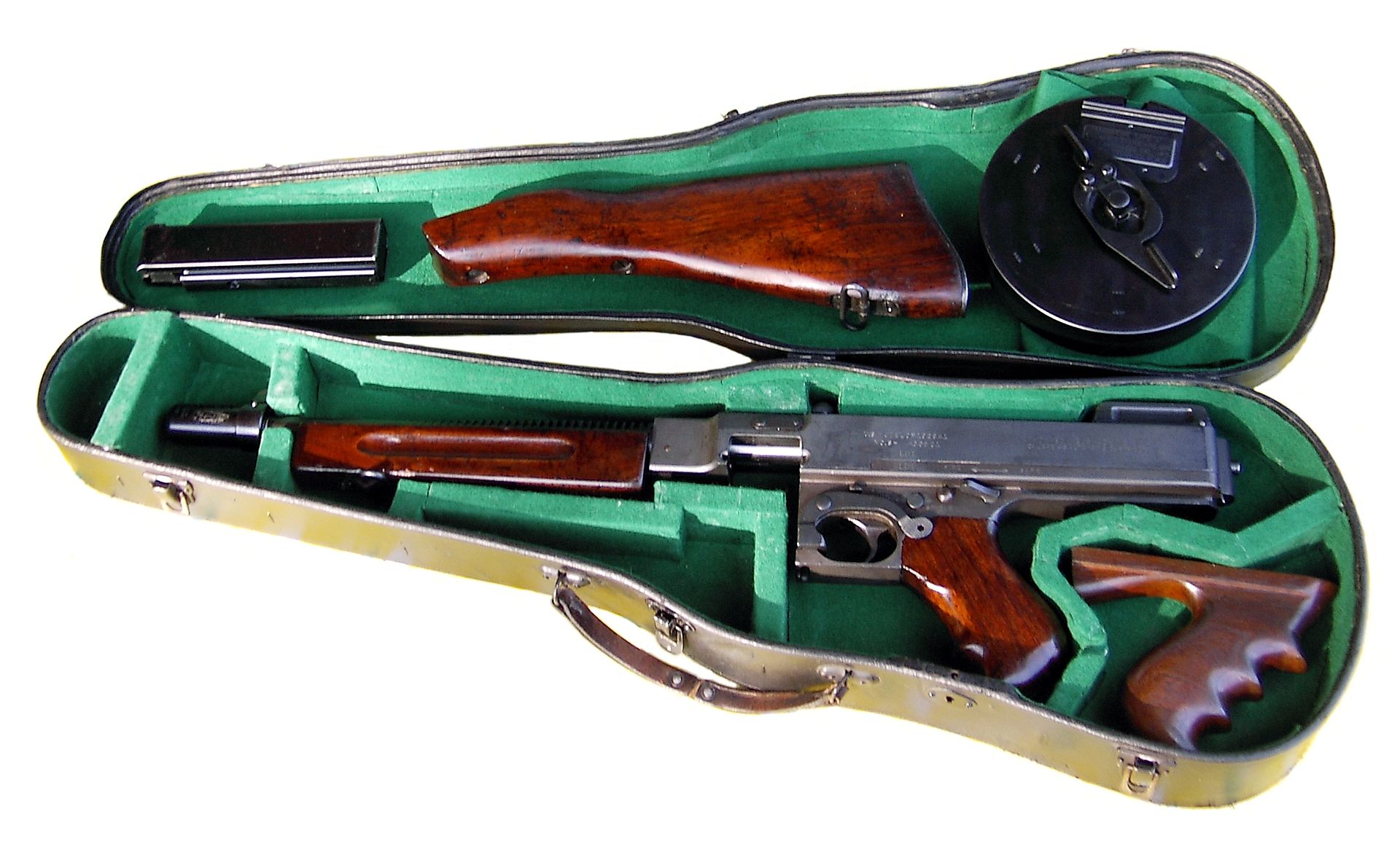
M1928A1, .45 ACP submachine gun: This SMG is another American Classic, and it was a classic by WWII all on its own. Originally developed for use in WWI, it missed the war, and any Military contracts, but the gun was sold on the civilian market. Enough sales trickled in from a few small government and police agencies, along with foreign sales to keep Auto-Ordnance alive between wars. The weapon was sensationalized by the media after it was used by prohibition era gangsters and a few notable regular criminals, and this inspired some of the nation’s first federal gun control laws. In 1934 the National Firearms Act went into effect after being passed by Congress. It limited the sale of Machine guns to civilians and made the ones already in Civilian hands have to be licensed.
There was already one huge limiting factor on Thompson sales, if you were not a government agency; you had to be pretty rich to buy one. Sure, a few criminals were, but what normal Joe of the 1920s could spend $200 bucks on a machine gun when a new car cost around $400? That 200 bucks was for the basic 1921 m model with 1 magazine. When you started adding things like the wood front pistol grip, deluxe wood furniture and drum magazines and fancy cases, the price could run into luxury car range.
The M1928A1 was not all the different from the M1921, and still used the odd Blish lock and could still take the drum magazines but had dispensed with the front pistol grip. If it had a drawback it was that it was large and heavy for a SMG, but you would think this would help control it.
The Army would go on to have even simpler version of this SMG produced, but as far as I know only the M1928A1 was issued with early to mid production Sherman tanks.
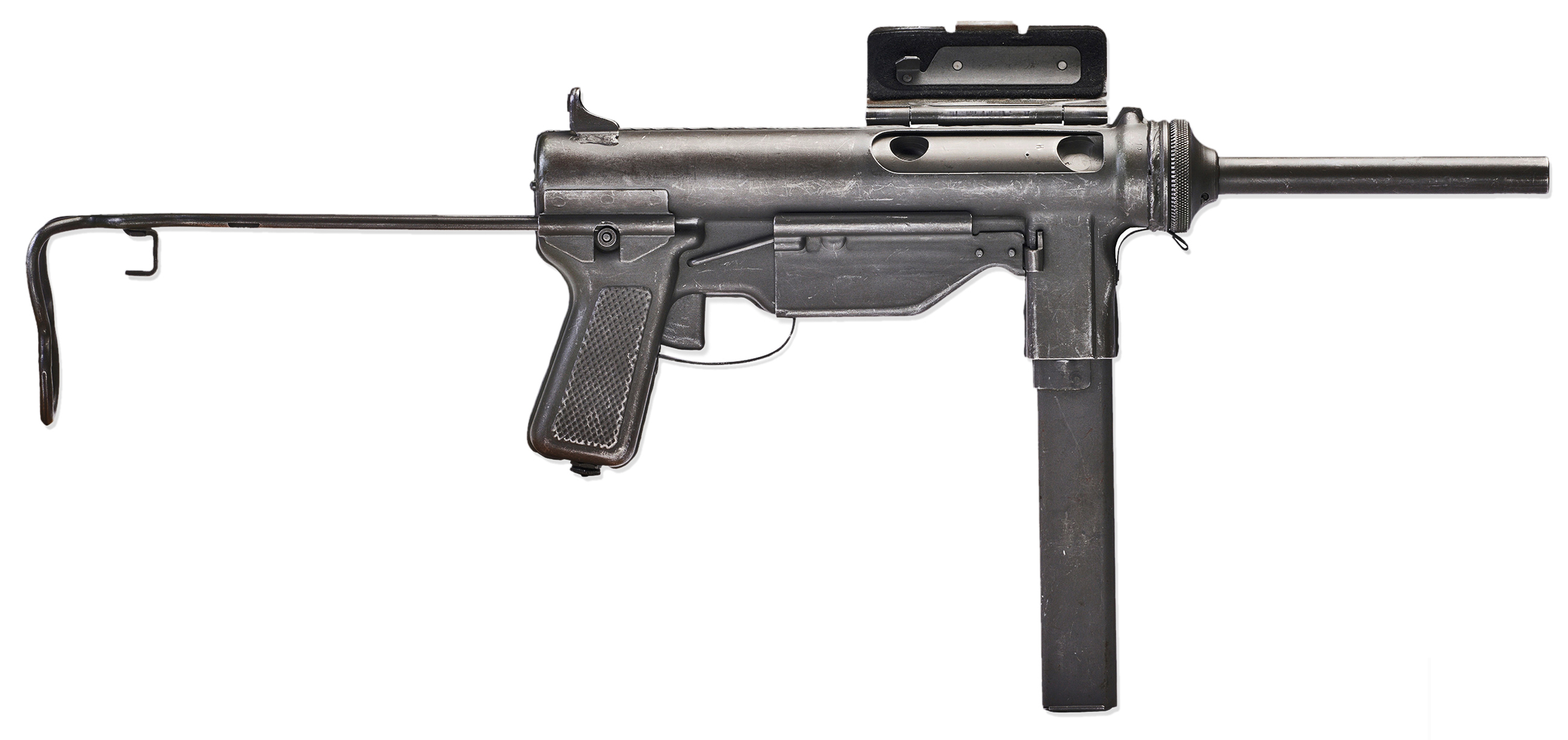
M3 and M3A1 .45 ACP submachine gun: This SMG was designed to be the easiest to manufacture and cheapest SMG that could still perform as well as the M1928A1 and the M3 was born. After some use, the M3A1 came about to solve all the problems with the basic M3. The M3 looks a little like a grease gun, so that name stuck, and the weapon would go on to serve into the 1990s as tank crewmen’s weapon.
The M3A1 was a simple no nonsense weapon that filled the tank crewmen dismounted weapon role fairly well, and that’s why it no one bothered to replace the thing. It was replaced with the MP5.
From the Sherman crewman perspective, I bet they’d say, five M3A1s is better than one M1928A1.
Next up, let’s talk about the pistol.
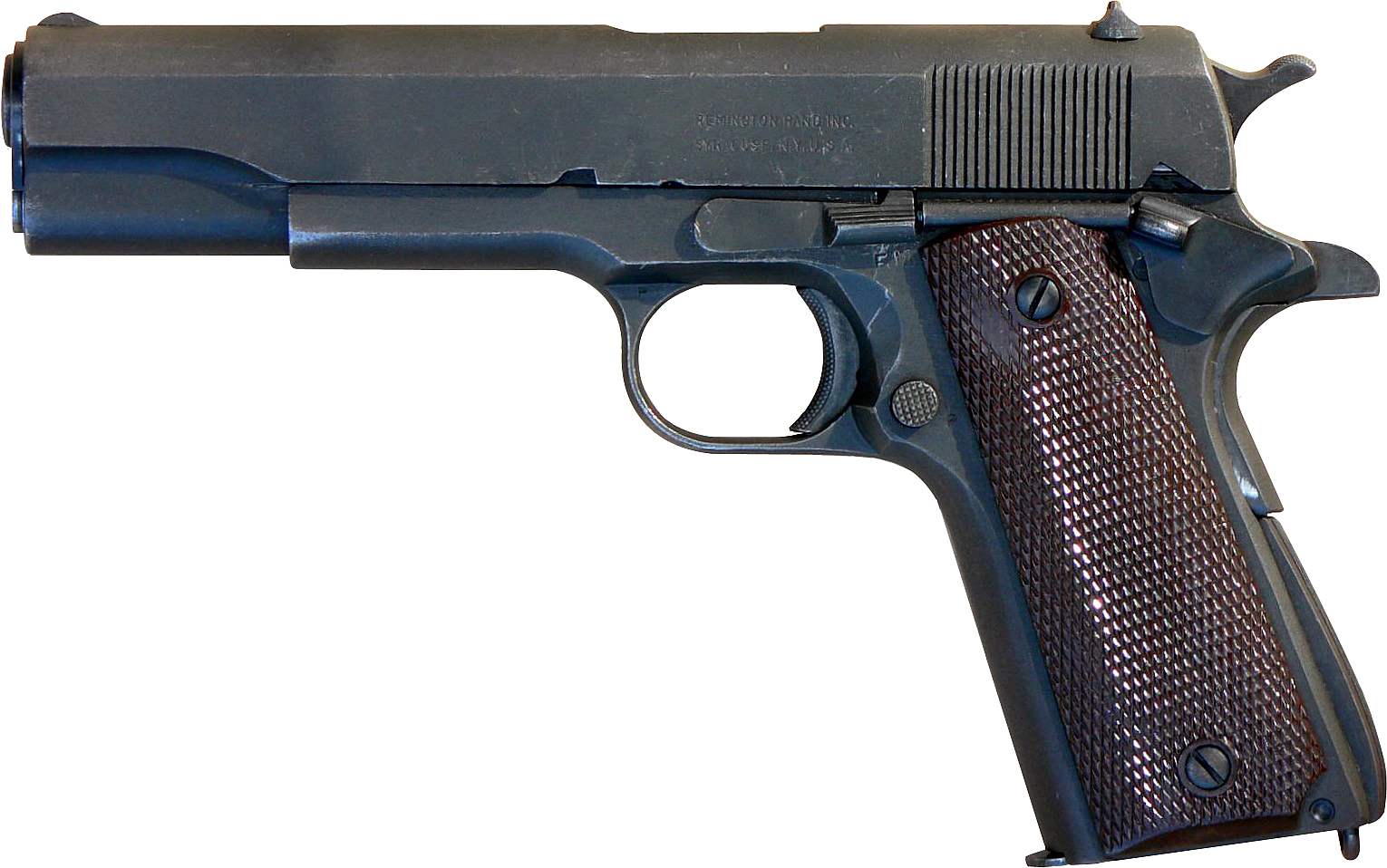
So much has been said about the 1911, I’m not going to say much, but I’ll note for those who don’t know, John Browning designed it too. I will say this, it is not the finest handgun ever produced, nor is it even close to the worst. It is probably the most popular handgun in America, and I own two. What it was, was a reliable, tested, accurate enough handgun for soldiers, pilots, officers or anyone else who needed one. Like all handguns, it should be viewed as a last resort, and the M3A1 or M1928A1 would be more useful in all but the most close of encounters for a tank crewman.
It also may be the most written about firearm ever as well, since every issue of Guns&Ammo, Guns, Shooting, etc. had at least two stories about some variant of the gun. I would be surprised if it isn’t the most popular handgun type in the United States. The only guns that seem to rival it are made by Glock.
. . .
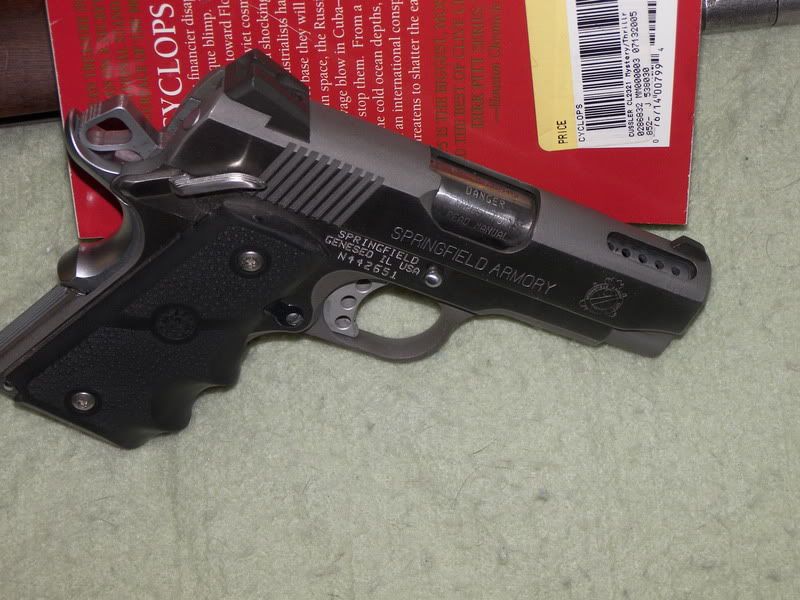
. . .
Now so far, we’ve only been talking about the weaponry issued with the tank or to the crew. Soldiers and marines being soldiers and marines means as soon as they were out of an environment where the tank the tank was being inspected on a regular basis they would have started acquiring extra things for the tank. Crews of early Shermans probably worked pretty hard to get more Thompson SMGs, or used captured German or ones; the MP-40 with its folding stock was nice for tank use. I’m sure they stuffed extra grenades all over the tank along with extra .30 cal and .50 cal ammo. Depending on unit discipline and how aware they were of the risk, some crews might have carried extra main gun ammunition as well, but unprotected main gun rounds were very dangerous to the crew. It wouldn’t be impossible for something like an M1 Garand or M1 Carbine to make an appearance as well. Mounting extra machine guns on the turret for the loader was a fairly popular modification as well.
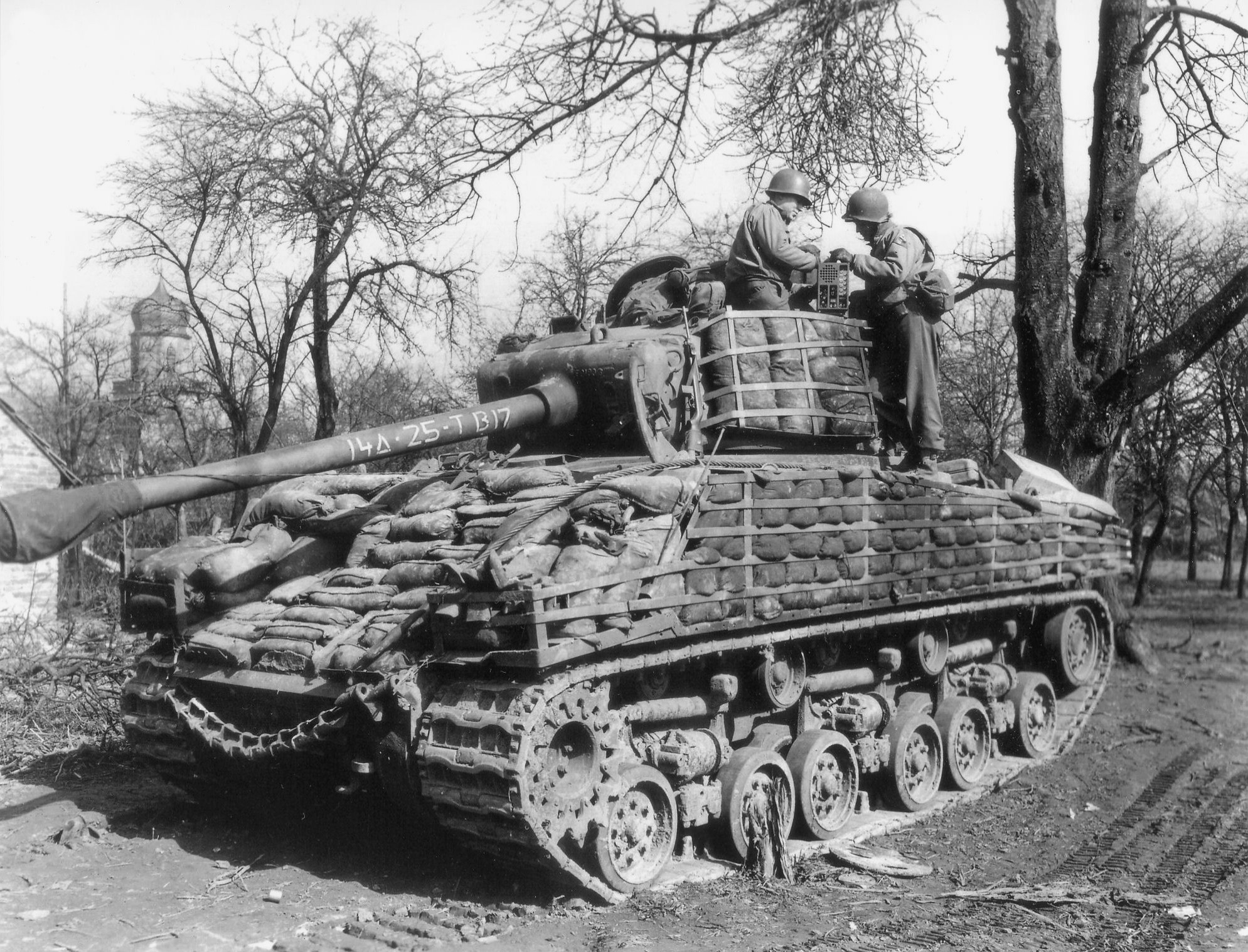
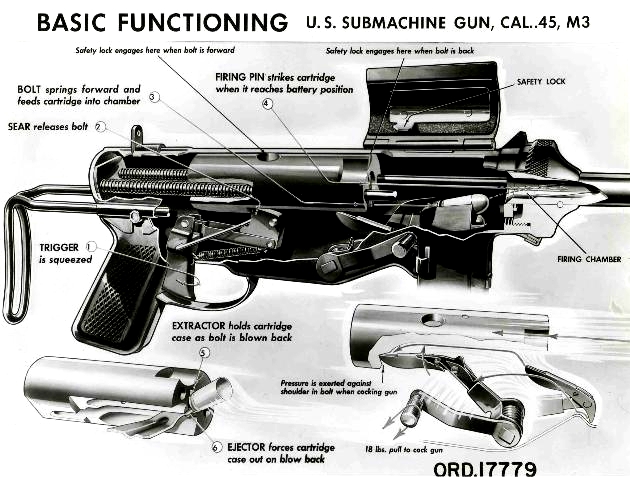
I knew the weapons they carried, what’d I’d like to know is what web gear did they have? Mag pouches on pistol belts? Plus where did they store the web gear? Also interested in M56 gear if you have any info for that
Of serious interest was that by the time the War hit the German border, upwards of half the line infantry companies were armed with sub machine guns (45 caliber though there would be some pick up MP42 as well)
You have to figure there was a whole lot of trading went on as they were not issued to the infantry in anywhere near those numbers.
Hey all! Have you ever seen or heard of any instances in which an M4A3 would have been fitted with a top mounted .30 instead of the normal .50? Just curious, as a modeler. Thank you
Logan,
That was a common change on M4A3 76w tanks, and sometimes the .50 was mounted coaxially. Sometimes the .50 was left on the loaders hatch it is was a split hatch tank, while also mounting a .30 1919 in from of the commander.
In Western Europe and Italy, the .50 caliber was more often kept as an anti-material weapon. A .50 cal can do serious damage to a building or any vehicle up to and including a half track. A .30 caliber was sometimes mounted forward of the TC’s hatch to give him a machine gun to use without having to climb onto the rear deck to fire the .50 on a non split-hatch turret.
In the Pacific, the .50 caliber was often replaced with a .30 caliber or just no gun at all. The .50 caliber was a large and heavy gun to manhandle if the tank was swarmed by Japanese infantry or suicide bombers. The .30 was easier to use and had a higher rate of fire.
July ’58 until July 61 vet. Enlisted for Armor. Ft LW for basic, Knox armor training. Assigned to 1st MTB (Patton) 34th Armor as part of 4th Inf Div at Ft Lewis, Washington. The M48 had the .50 cal external “hero mount”. 48A1 had the .50 mounted inside the TC cupola. The M48s at Ft Knox had armor flaws and could only be used for training. First time I have ever heard the correct description of the single-cylinder “little Joe). It powered a 200 amp generator to use for power when the main engine was not running and also charged the batteries. CO 6 and XO 5 had bulldozer blades for digging hull defilade positions. 11, 21, & 31 had searchlights attached to the main gun mount.
Should have added the tc, loader, and gunner had 1911A1s. Driver had a M3A1.
I’ve been looking at a lot of your high-res photos of US and British Shermans, and can’t help noticing that in the majority of the photos the tanks don’t seem to have any machine guns, .50 or .30, mounted on top of the turret. And where a frontal view is provided, I frequently have a hard time detecting a co-ax .30 MG.
co-ax gun barrel was often flush or just barely extended past the M34A1 mantlet
I was a tanker in the 1960’s, I received initial training at Company A 4th Bat. 1st Armor Brigade USATC Fort Knox Kentucky, after training my unit held me and a fellow named Hodson over to become instructors. I later went of to the 3rd Armored Div. serving in Mannheim Germany, and later in Vietnam in 4th and 25th Inf. Div.
We trained at Knox in M48A1, M48A2, M48A3, and M60/A1, we also got to try out M41 25 ton Walkers and the (then) brand new M551 Sheridan light tank, We also trained for familiarizatin in M113 and the Scout M114.
The 48 A1 &A2’s were gasoline engine machines, the 48A3 and of course the M60 were diesels, and were far superior in operation, reliability and especially range to the gas fired machines.
The only thing we liked better about the A1’s & A2’s was that they had a small generator engine in the power pack that we called ‘little Joe’, that saved the day when your batteries were dead, which was often the case during the winter months at Fort Knox.
The M60A1’s we had at 3rd armored in Germany had extra batteries (under turret floor) to replace the need for Little Joe.
You’re correct about the individual crewman tank weapons, Thompson, and later M3Al’s and of course each crewman carried a .45 in a chest holster.
We actually trained the the early M3’s with the early charging/cocking lever but they were not used on our tanks all were M3A1’s, of which there were two per tank that mounted on turret wall snap holders on the left and right side of the turret next to the TC and loader hatches. We also had 2 thermite mines, in addition to two cases of grenades. The mines for there specifically to disable/destroy the vehicle if it had to be abandoned. In Vietnam we had ‘midnight requisitioned’ everything from 12GA shotguns (from Marines), and M79 grenade launchers (from fellow soldiers) to AK47’s from dead enemy.
We also had an extra smg Thompson (from ARVN) in addition to our 2 M3’s, along a couple of M14’s and M16’s. We carried 60 rounds of main gun ammo. we had a few rounds of every type from HE, Shot, and WP, mostly HE, WP, and Cannister.
We also cut off the neck down end of an expended 90MM round and kept a bottle of liquor wrapped in a rag hidden in the expended round in one the 90MM stow racks next to the driver. We were well armed and well stocked with booze
Joe,
Thanks for posting! The M48 has always been a favorite for me, as impractical as the little commanders cupola turrets were, I’ve always found them cool! One of my favorite books is Ralf Zumbro’s Tank Sergeant, about his time in Vietnam in M48A3s. It’s a great read, though, I’m sure less interesting for you since you’ve been there and done that!
Anyway thanks again for the really cool comment. I wouldn’t have though they’d have any early M3 by the 60s! I’ve also read about WWII GI’s storing booze in similar ways!
Hey, is that a Clive Cussler book? YUCK